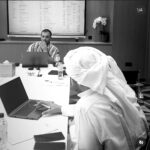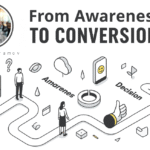The optimal amount of light is crucial for plants to carry out photosynthesis. However, too much light can overheat greenhouse plants, cause moisture loss, and even sunburn delicate leaves and flowers. This is where Shade Cloth For Greenhouse comes in very handy!
Controls Light Levels
Shade cloth or netting blocks out a specific percentage of sunlight, providing just the right amount of shade and light balance. Most cloths block 30% to 80% of sunlight, with 50% shade cloths being the most popular general purpose option. The shade percentages allow you to customize light to your plants’ needs.
Manages Temperatures
By providing shade and blocking solar radiation, shade cloths prevent greenhouses from overheating during the hot and bright summer months. The interior stays much cooler compared to a greenhouse without shade cloth. This protects plants from heat damage.
Protects Plants from Harmful UV Rays
The shade fabrics have ultraviolet stabilizers that filter out the harmful and intense UV rays of the sun. This protects tender vegetation, buds, and flowers from sunburn damage.
Reduces Water Loss
With shade cloths installed, plants lose markedly less moisture because of the cooler and less windy conditions inside the greenhouse. You’ll spend less time watering and won’t have to worry as much about plants drying out.
Prevents Pest Infestations
Shaded and cooler greenhouses are less prone to infestations by aggressive greenhouse pests like spider mites and whiteflies, which proliferate rapidly in hot and dry conditions. Your plants stay healthier with shade cloths.
Types of Shade Cloths for Greenhouses
There are a few different categories of shade fabrics tailored to greenhouse use based on material, construction method, and composition.
Woven Shade Cloth
Woven shade cloths have a crisscross pattern with uniform tiny square openings throughout. They are affordably priced, durable, and provide very consistent levels of shade. These cloths come in different percentages and colors.
Knitted Shade Cloth
Instead of woven threads, knitted shade fabrics are made of knotted polyethylene or nylon yarns. They have an irregular pattern with uneven openings. Knitted cloths are lightweight, retain less moisture, and easily conform to any shape.
Aluminet Shade Cloth
Aluminet cloths are knitted fabrics woven with thousands of tiny aluminum strands that reflect sunlight. They offer more cooling versus standard knitted cloths while allowing air circulation. Aluminets are excellent for very hot climates.
Factors to Consider When Choosing Shade Cloth
Picking the right shade cloth involves assessing several factors like the ones below to meet your greenhouse needs.
Light Reduction Percentage
This depends on your climate and plants. For hot tropical areas, 30% to 50% shade works well. In temperate regions, go with 30% to 70%. Some delicate flowers and vegetables need 70%+ shade cloth.
Location and Climate
Greenhouses in hot climates need heavier shade density fabrics than ones in cooler locales. East/west facing greenhouses get more intense morning/evening light versus north/south facing ones.
Type of Plants
Leafy greens, orchids, and other shade lovers thrive with 60%+ shade cloths. Fruiting vegetables, roses and cacti grow better with 30% to 40% shade density.
Time of Use
Use heavier shade cloth during summer and remove some layers in winter to allow in more light when intensities are lower. Have the option to adjust layers based on seasonal light.
Installation and Use Tips
Properly installing shade cloth lets you maximize its benefits for your greenhouse plants.
Seasonal Installation
Install shade cloth on greenhouse frames in early spring before temperatures rise. Remove some layers or switch to lighter density cloths as winter approaches.
Allow For Ventilation
Ensure greenhouse vents and windows are not fully blocked by the shade cloth. Keep entry points at both roof and side walls for proper cross ventilation.
Use Multiple Layers of Shade Cloths
Layer two shade cloths of different densities, like 30% and 50%, to allow incremental light reduction. Or install a heavier 70% cloth above delicate plants and a 20% cloth over sturdier species.
Caring for and Maintaining Shade Cloth
Like any fabric exposed to the elements, Greenhouse Shade Cloth need some basic care to last.
Proper Storage
Clean, air dry, and neatly fold away shade cloth if removing it for winter. Avoid moisture and pests by storing cloths in a dry, sealed bin.
Checking for Damage
Inspect shade netting and fabric before and after installation for any tears, holes, etc. Mend damages promptly to retain shade integrity.
Cleaning and Repairs
Gently hand wash or pressure wash dirty shade cloths. Use UV stabilized thread to sew up holes or tears. Patch bigger holes with fabric glue or shades cloth scraps.
Costs and Where to Buy Shade Cloth
Below are some pointers on shade cloth pricing and where you can purchase them:
Pricing Factors
Density, fabric quality, and size impact pricing. 30% cloths range from $0.40 to $1 per square feet. While heavier 90% greenhouse shade fabrics cost $3 to $5 per square foot.
Online Retailers
Leading online sellers include QiBang Netting, FarmTek, and Greentek. These offer the widest fabric shade percentage and size options.
Local Stores
For convenience, buy from local nurseries, garden stores, hardware shops, or home improvement centers. But shade cloth selection is usually limited.
Conclusion
Shade cloth is essential for greenhouses to control intense sunlight, heat, moisture loss, and pests. The fabrics moderate greenhouse microclimates for optimal plant growth and productivity. Carefully weigh options like density, location, plant types, and seasons when deciding on the best shade cloth. With proper yearly installation and maintenance, a quality shade netting or fabric will give many years of cooling shade to your greenhouse garden.
FAQs:
How much shade cloth should I use in my greenhouse?
The ideal shade density depends on climate, greenhouse orientation, crops grown, and seasonal light variations. Most situations work well with 30% to 70% shade cloths. Determine light needs and use incremental layers for adjustability.
Should my shade cloth cover the entire greenhouse?
Install shade cloth to fully cover plants and beds inside the greenhouse. But allow ventilation gaps along the roof and sides. Avoid 100% enclosure for adequate airflow. Orient north-south when possible for fewer intense direct sun hours.
Can I layer two different shade cloth densities?
Absolutely! Layering multiple shade cloths lets you further fine-tune light levels. For example, use a 50% shade cloth over delicate orchids and a 30% cloth over hardy cacti in the same greenhouse for customization.
How often should I replace worn out shade cloths?
Inspect shade nets periodically, especially after storms and seasons, checking for wear and age deterioration. Most quality greenhouse shade fabrics have a 3 to 5 year lifespan with proper seasonal removal and storage. Replace whenever you notice excessive holes, tears, etc lowering the shade effectiveness.
Where is the most economical place to buy greenhouse shade cloth?
Large online greenhouse supply websites like QiBang Netting, FarmTek and Greentek offer the most economical pricing due to bulk discounts. They also have the widest selection of shade densities and cloth sizes. Local stores provide convenience but much less variety and economics.





